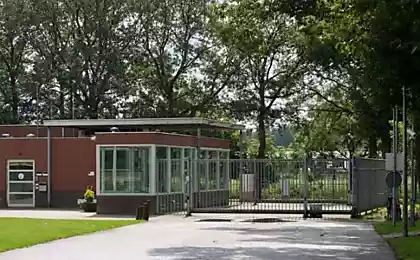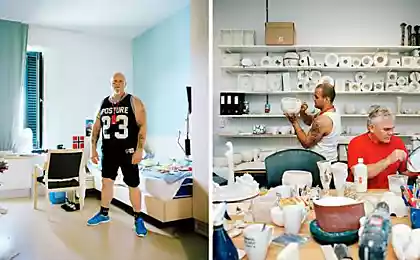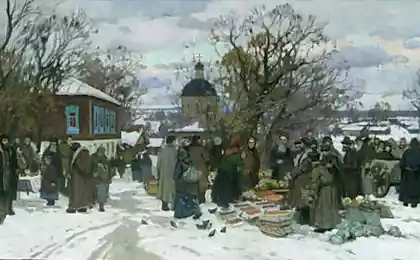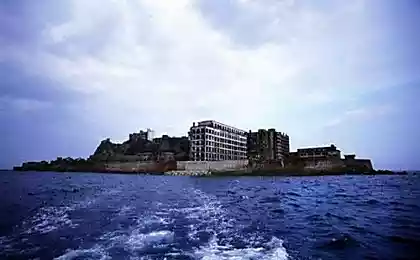1526
Prison "Crosses"
Please do not break as completed - will wear a tie and nod your head
Until the XVI century in the history of Russia information on the construction of prisons are absent. Place of detention facilities were the least comfortable for life, cellars, holes and cellars. The conditions were very heavy. As an independent form of criminal punishment, imprisonment provided for the first time in 1550, Sudebnik. A little later, there are mentions of the construction of the stone prison. Before the abolition of serfdom crime committed fortress, Kara power of the landlords.

After 1861 the peasant fell under the general court and, if convicted, subjected to imprisonment. Cancel 1863 corporal punishment has also led to an increase in crimes punishable by imprisonment. Thus, in the 2nd half of the XIX century, more than ever, the need for decisive action to regulate prison affairs. In March, 1879 in the Ministry of Internal Affairs of Russia was formed main prison management. As conceived by its founders, it was intended to be the final authority, supervises the prison authorities. Among the first was a question about the construction of a prison. To study the case of the prison were sent abroad for several persons. Among them - Anthony I. Tomishko - born in Austria-Hungary, who lived a long time in Russia, and at the time of travel - academician of architecture and the architect of the Main Staff of the prison administration. In the extensive instructions it recommended that: "The prison should be built durable and comfortable, but quite simply, without unnecessary ornaments and luxury, often permitted in the western states, and so undesirable for Russia, which will build a large number of places of detention».
Krasnoyarsk transit prison. 1880

On a plot of 10,925 square meters. fathoms under the program approved by 3.8.1884, the Alexander III project AI Tomishko in 1884 construction began on the St. Petersburg solitary prison for 1150 prisoners. The site was chosen in the territory of the Vyborg side, on the embankment of the Neva River Great.

Tomishko not casually suggested to take up a new position for the prison authorities of the architect: he demolished the prison building in Staraya Russa and created a draft of a new, modern county jail, which became the de facto standard: this sample was built 22 prisons in Vesyegonsk, Vyazma, Tsaritsyn and other cities. Furthermore, the architect studied prison construction in Europe, particularly in Berlin.
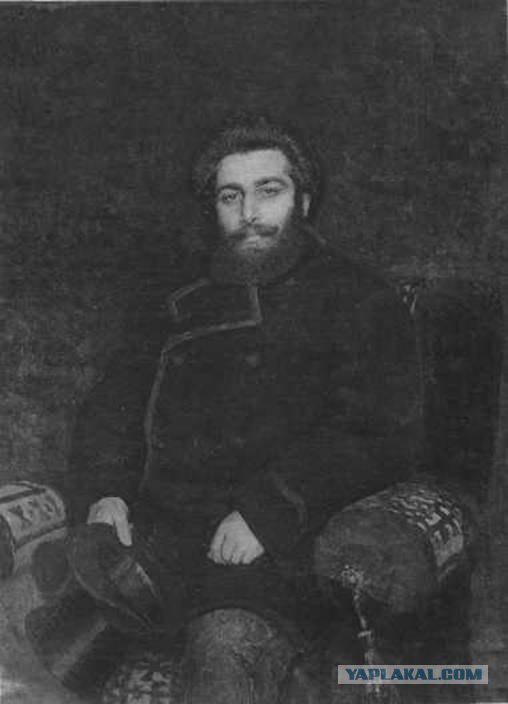
New German prison "Moabit" struck him practicality and panache. The main building was like a open fan: from the tower of three parties withdrew three wings. A library of the University of Berlin Tomishko acquainted with architectural projects creators of the Philadelphia system offered to build a prison in the form of a star. By the way, this idea has been implemented in some European cities: in the center - 8-coal tower, and from it in the form of rays are 5-7 metal housing galleries.

Tomishko applied in the construction of the prison known tyurmostroenii panopticon principle, which means, in contrast to the old prisons - prisons, the greatest possible transparency, the illumination of prison facilities with a view to a permanent and inclusive monitoring of prisoners; the last turn as though the actors on brightly lit stage.
In the design of a single prison for the Russian capital Tomishko used some foreign ideas, but ideas brought to the local mentality. He reasoned as follows. If the offender - a sinner, that solitary confinement should be his keley where he will beg God for forgiveness. So, the very prison should resemble the cross of the Savior. And indeed, if you look at the prison complex built Tomishko from a height or a plan clearly shows two cross-shaped 5-storey building. Hence the name is - "Crosses».

Construction, which lasted 5 years and 7 months, was completed in 1890. It carries hozsposobom: prisoners who are in the old prison, built a new and as new buildings passed into them, and the old ones break down. All of the prison built of red brick cooperative Strelin brothers, figured brickwork facade gave the impression of castle buildings.

On the territory of 4, 5 hectares is located two blocks from solitary confinement, hospital, infectious barracks morgue, a glacier, a smithy and other buildings. Enclosures with cameras built in the form of two equal, equal-crosses.

The decoration of the complex is the house-krestokupolnaya five-domed church of St. Alexander Nevsky 400 seats, crowning the administrative building. It was created in the neo-Russian-Byzantine style with a laying of red brick, like the rest of the prison complex. All the interiors are painted SI Sadikov and the iconostasis of the picture A. Tomishko made at the expense of the Kazan patron Tyufilina (not preserved) consecrated the church was 03/07/1890 Anthony Bishop of Vyborg.
During the construction of this complex the architect often adopts the innovative engineering solutions and technical issues. So, here it was used electricity for lighting and central heating. Water supply, sewerage, electrification create standalone. In this mode without overhauls they work today. Built on innovative projects, the prison became a model for Russia in the late nineteenth early twentieth centuries. From the memoirs of revolutionary P. Infantiev, spent in the "cross" 10 months of solitary confinement: it was a "prison with its spacious, bright and extremely clean corridors where no one could see a speck of dust on and everything glistened, since waxed asphalt floor, and constantly clean out ". In sredokrestii, apparently, from the western "cross", "There was a small column of the monument to John Howard, the famous British sympathizer hard on improving the proportion of prisoners.

There is a legend telling that among prison inmates was even its creator - an architect Anthony Tomishko. Upon completion of construction architect was summoned to report to the emperor. The audience ended badly. Tomishko has reported as follows: "Your Majesty, I have built a prison for you!", To which the king responded wittily: "Not for me, but for himself!" - And ordered the architect of one of the chambers in perpetuity. Rumor has it that the poor Tomishko walled chamber N 1000. No one knows where it is. Jacobs just "cross" 999 cameras that are constantly used. They are all normal. But there is one, the one where the architect sleep eternal sleep. It is hidden from prying eyes, no one knows where the door leading into it.
Serious historians say that this is just a legend. There is no reliable data that Tomishko Anthony ended his days in a secret chamber. But a lot of other evidence: that the architect died a natural death, and in the wild. Among loving family. Only his tomb has not survived. And therefore the prisoners and prison staff fell, fall, and will fall under the charm of this legend.
Posted in [mergetime] 1297846856 [/ mergetime]
"Cross" is the largest construction project in the program of conversion "of the prison" in the Russian Empire that was conducted by the Chief Prison Administration of the Ministry of Internal Affairs. The prison called model; on the basis of its project in Russia built 28 prisons, but smaller.
The "cross" along with criminals and political prisoners were held, sentenced to solitary confinement. All administrative and economic matters are dealt with prison committee, which consisted of a chief, his assistants, the priest and the doctor.

The prisoners lived in single eight-meter cells with a small window and a built-in ventilation, as well as the achievements of the civilization of that time: the toilet with a sink, a faucet with water for drinking and washing. In setting the camera were a table, a chair, a small bookcase, an iron bed, on hinges attached to the wall. During the day it rose to a prisoner could not lie. From bedding issued pallet and pillow.

The rise was carried out at 5 o'clock in the winter six. In an hour it was necessary to put himself in order to remove the camera, to pray. For calibration testing of the morning was a chore. Then the prisoners were taken out for a walk in the prison yard. In the evening and checking, cleaning chamber, prayer. Air days twice a month. Linen changed on prisoners every week. Correspondence is allowed only with close relatives with the permission of the warden.
The duty was charged prisoners studying at school and forced labor. But the prisoners were given the opportunity to use their creativity in crafts. As a result, the "cross" was awarded the Gold Medal of the All-Russian handicraft industrial exhibition 1902 in St. Petersburg "For the great variety of setting manual labor and very good product."
Since December 1890 in "Cross" began its activity in the first Russian prison typography. With this print, it was possible to form the Ministry of Internal Affairs and the Directorate General for Prisons extensive library service literature. It was published until 1917 the magazine "Prison Bulletin", which played a prominent role in the training of officials of the prison administration and supervision.
Violations of prisoners of his duties entailed penalties of deprivation of correspondence and visits to the retention of earnings and placement in light or dark solitary confinement from 6 to 30 days with the deprivation of the bed and a hot meal.
For more than a century of existence of the "cross" is inextricably linked with the course of the history of our country Until 1917 here along with common criminals, detained revolutionaries and politicians. Among the latter, you can list a few names known from school: AF Kerensky, PN Milyukov, LD Trotsky, AV Lunacharsky, VA Antonov, LB Kamenev, MI Kalinin. In the summer of 1908 in the "cross" serving a three-month prison sentence former deputies of the 1st State Duma, took after the dissolution of the Duma in 1906. "Vyborg Manifesto." In the evening, 02.27.1917 protesters at the Finland Station workers, soldiers and sailors called by MI Kalinin stormed the "Crosses". Having mastered the prison, they were released from it all criminal and political prisoners, and their business was burned at the stake.

During the revolutionary events in February 1917 arrested ministers of the tsarist government, prominent gendarmes and police officers, dignitaries delivered from the Tauride Palace in the "cross", and in 1917-1918 - from the fortress, including: BZ Sturmer (who died in the "cross" at the end of 1917), the Minister of Justice Shcheglovitov IG, former Interior Minister Khvostov AN, the War Minister Belyaev MA, gendarmerie generals Spiritovich AI, Semiganovsky, former Deputy Minister of Internal Affairs Kurlov PG, SP Beletsky, AV Vasilyev, director of the Police Department EK Klimovich and others. The "Cross" held: former Minister of War Sukhomlinov VA, commander of the 5th Army Boldyrev VP, assistant commander of the Petrograd military district Rutenberg PM killers Kokoshkin and Shingarev, ministers of the Provisional Government, Basov SS . Kulikov AG, and ... All of these "former" in detention the protection of the Cheka prison in an isolated building surgical hospital in the "Kresty».
In 1920, the "cross" of a single prison converted in the 2nd camp of forced labor and the special purpose of the Commissariat of Justice transferred to the Division of the Office of the Executive Committee of the Petrograd Soviet. At the end of 1923 the prison poured into Petrograd Provincial OGPU and receives the status of the Petrograd District isolation prison.

The structure of the prison included a prison special purpose for the content and organization of work of convicts - Profile of military experts, united in the parent company - OKB-172. They call them "sharashka" worked in them talented designers, engineers, mathematicians, physicists. On the basis of this draft EDO torpedo boat, which played a significant role in the defeat of the naval forces of Nazi Germany in the Great Patriotic War.
During the siege of the prison he was plunged into darkness, cold and hunger. A handful of employees (the elderly and women) were in the barracks. They organized protection and defense of the prison. Against Input gate lodge on the banks of the Neva, built bunker. Prison exposed to constant enemy fire, so appeared defeated several prison buildings. 07/11/1941 bombing demolished North Gate and killed two guards. Some employees have died from exhaustion. Instead, prisoners sent in the first months of the war at the front, and in part - to the eastern regions of the country, "Cross" during the siege there were persons arrested for robbery, theft of food and ration cards, and then - captured soldiers and officers of the Wehrmacht. In connection with the position of NS Khrushchev about the imminent disappearance of the Soviet Union in crime throughout the country began to close the prison, especially since the construction of "tsarism". The "cross" flowed minors, women, and condemned to be transferred or sent to prison. But in the "cross" already contained a significant number of repeat offenders and dangerous criminals sentenced to imprisonment. This circumstance has created incredible hardships in the prison personnel.
After 3 years, the number of juveniles increased to 500. They were placed on the 7th ward. To work with them formed a team of trainers and teachers who did not have teacher training. For several years, they had to teach the techniques of corrective and educational work with teenagers diviantnogo behavior. The training included teaching staff adolescents evening school № 65. All teens engage in productive labor for the production of the cardboard packaging. So over the years in the "cross" formed a highly qualified team of educators and unique prison system to remedy teenagers. It was original and unique in its characteristics Leningrad school experience that apply to the entire country.
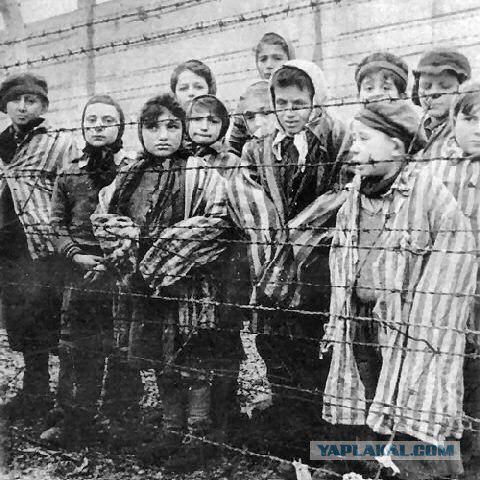
Since 1964 - a prison "Crosses" became a detention facility № 1. Persons suspected or accused of committing crimes, are here before the verdict of the court. In 1983, of the "cross" brought minors and women.
On the conditions of detention of suspects in the cells can only guess. 3-storey iron bunks, zareshёchennoe box, passes a narrow strip of daylight, "push" - the local language toilets. Record capacity of the detention center, if you do not take data 1930: 12, 5 thousand prisoners. So many people were sitting in the "cross" in the mid-1990s. According to eyewitnesses, then it was something terrible: people crammed into the chambers tighter than sardines. It is still soft comparison - without any exaggeration. In a cell measuring eight square meters, designed for 6 persons, held up to 20 people, so I had to sleep in turns.
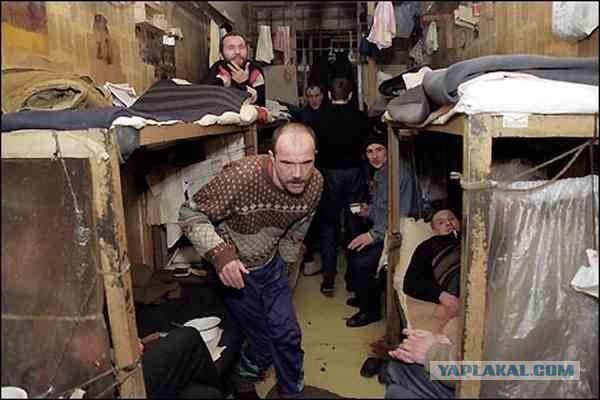
In 1992, the prison church resumed rare prayers - 1st was in honor of the 750th anniversary of the Battle on the Ice. In 1999 there was a prison church rector. However, the scene at the church club was dismantled only in early 2003. Erected temporary iconostasis, renovated old oak frame.
After numerous requests, shortly before leaving the governor's post, the means of installation of crosses over the dome of the church singled out Vladimir Yakovlev, and in January 2004, the dome of the temple once again crowned lost crosses.

At present, institutions from 47/1 GUIN Justice Ministry of Russia in St. Petersburg and Leningrad region remains among the largest penal system. Service in such a division is not easy, requires courage, self-sacrifice, worldly wisdom, good manners. Another 300 went back, Peter I claimed: "The prison has accursed craft, and business of this exceedingly sorrowful istrebny people hard, kind and funny." Staff at remand prison number 1 performing their duties while preserving the best traditions of previous generations.

Despite the fact that the problem of overcrowding in prisons and remand centers has been very actively engaged, that allowed to unload and "Crosses", the issues of food, bedding and other things remain relevant for the "cross" and for other investigative insulators Petersburg.

The problem of extra people in jail there and in Europe. But there it is decided otherwise, not ramming the prisoners in the cell. For example, a person in the Netherlands will not in jail, if all the seats are occupied. A guilty verdict in this case is not an argument. When the camera is not available, was sentenced to imprisonment will be asked to wait until a bed becomes available. Therefore, in prison there are literally a queue - to serve.
Source:
Until the XVI century in the history of Russia information on the construction of prisons are absent. Place of detention facilities were the least comfortable for life, cellars, holes and cellars. The conditions were very heavy. As an independent form of criminal punishment, imprisonment provided for the first time in 1550, Sudebnik. A little later, there are mentions of the construction of the stone prison. Before the abolition of serfdom crime committed fortress, Kara power of the landlords.

After 1861 the peasant fell under the general court and, if convicted, subjected to imprisonment. Cancel 1863 corporal punishment has also led to an increase in crimes punishable by imprisonment. Thus, in the 2nd half of the XIX century, more than ever, the need for decisive action to regulate prison affairs. In March, 1879 in the Ministry of Internal Affairs of Russia was formed main prison management. As conceived by its founders, it was intended to be the final authority, supervises the prison authorities. Among the first was a question about the construction of a prison. To study the case of the prison were sent abroad for several persons. Among them - Anthony I. Tomishko - born in Austria-Hungary, who lived a long time in Russia, and at the time of travel - academician of architecture and the architect of the Main Staff of the prison administration. In the extensive instructions it recommended that: "The prison should be built durable and comfortable, but quite simply, without unnecessary ornaments and luxury, often permitted in the western states, and so undesirable for Russia, which will build a large number of places of detention».
Krasnoyarsk transit prison. 1880

On a plot of 10,925 square meters. fathoms under the program approved by 3.8.1884, the Alexander III project AI Tomishko in 1884 construction began on the St. Petersburg solitary prison for 1150 prisoners. The site was chosen in the territory of the Vyborg side, on the embankment of the Neva River Great.

Tomishko not casually suggested to take up a new position for the prison authorities of the architect: he demolished the prison building in Staraya Russa and created a draft of a new, modern county jail, which became the de facto standard: this sample was built 22 prisons in Vesyegonsk, Vyazma, Tsaritsyn and other cities. Furthermore, the architect studied prison construction in Europe, particularly in Berlin.

New German prison "Moabit" struck him practicality and panache. The main building was like a open fan: from the tower of three parties withdrew three wings. A library of the University of Berlin Tomishko acquainted with architectural projects creators of the Philadelphia system offered to build a prison in the form of a star. By the way, this idea has been implemented in some European cities: in the center - 8-coal tower, and from it in the form of rays are 5-7 metal housing galleries.

Tomishko applied in the construction of the prison known tyurmostroenii panopticon principle, which means, in contrast to the old prisons - prisons, the greatest possible transparency, the illumination of prison facilities with a view to a permanent and inclusive monitoring of prisoners; the last turn as though the actors on brightly lit stage.
In the design of a single prison for the Russian capital Tomishko used some foreign ideas, but ideas brought to the local mentality. He reasoned as follows. If the offender - a sinner, that solitary confinement should be his keley where he will beg God for forgiveness. So, the very prison should resemble the cross of the Savior. And indeed, if you look at the prison complex built Tomishko from a height or a plan clearly shows two cross-shaped 5-storey building. Hence the name is - "Crosses».

Construction, which lasted 5 years and 7 months, was completed in 1890. It carries hozsposobom: prisoners who are in the old prison, built a new and as new buildings passed into them, and the old ones break down. All of the prison built of red brick cooperative Strelin brothers, figured brickwork facade gave the impression of castle buildings.

On the territory of 4, 5 hectares is located two blocks from solitary confinement, hospital, infectious barracks morgue, a glacier, a smithy and other buildings. Enclosures with cameras built in the form of two equal, equal-crosses.

The decoration of the complex is the house-krestokupolnaya five-domed church of St. Alexander Nevsky 400 seats, crowning the administrative building. It was created in the neo-Russian-Byzantine style with a laying of red brick, like the rest of the prison complex. All the interiors are painted SI Sadikov and the iconostasis of the picture A. Tomishko made at the expense of the Kazan patron Tyufilina (not preserved) consecrated the church was 03/07/1890 Anthony Bishop of Vyborg.
During the construction of this complex the architect often adopts the innovative engineering solutions and technical issues. So, here it was used electricity for lighting and central heating. Water supply, sewerage, electrification create standalone. In this mode without overhauls they work today. Built on innovative projects, the prison became a model for Russia in the late nineteenth early twentieth centuries. From the memoirs of revolutionary P. Infantiev, spent in the "cross" 10 months of solitary confinement: it was a "prison with its spacious, bright and extremely clean corridors where no one could see a speck of dust on and everything glistened, since waxed asphalt floor, and constantly clean out ". In sredokrestii, apparently, from the western "cross", "There was a small column of the monument to John Howard, the famous British sympathizer hard on improving the proportion of prisoners.

There is a legend telling that among prison inmates was even its creator - an architect Anthony Tomishko. Upon completion of construction architect was summoned to report to the emperor. The audience ended badly. Tomishko has reported as follows: "Your Majesty, I have built a prison for you!", To which the king responded wittily: "Not for me, but for himself!" - And ordered the architect of one of the chambers in perpetuity. Rumor has it that the poor Tomishko walled chamber N 1000. No one knows where it is. Jacobs just "cross" 999 cameras that are constantly used. They are all normal. But there is one, the one where the architect sleep eternal sleep. It is hidden from prying eyes, no one knows where the door leading into it.
Serious historians say that this is just a legend. There is no reliable data that Tomishko Anthony ended his days in a secret chamber. But a lot of other evidence: that the architect died a natural death, and in the wild. Among loving family. Only his tomb has not survived. And therefore the prisoners and prison staff fell, fall, and will fall under the charm of this legend.
Posted in [mergetime] 1297846856 [/ mergetime]
"Cross" is the largest construction project in the program of conversion "of the prison" in the Russian Empire that was conducted by the Chief Prison Administration of the Ministry of Internal Affairs. The prison called model; on the basis of its project in Russia built 28 prisons, but smaller.
The "cross" along with criminals and political prisoners were held, sentenced to solitary confinement. All administrative and economic matters are dealt with prison committee, which consisted of a chief, his assistants, the priest and the doctor.

The prisoners lived in single eight-meter cells with a small window and a built-in ventilation, as well as the achievements of the civilization of that time: the toilet with a sink, a faucet with water for drinking and washing. In setting the camera were a table, a chair, a small bookcase, an iron bed, on hinges attached to the wall. During the day it rose to a prisoner could not lie. From bedding issued pallet and pillow.

The rise was carried out at 5 o'clock in the winter six. In an hour it was necessary to put himself in order to remove the camera, to pray. For calibration testing of the morning was a chore. Then the prisoners were taken out for a walk in the prison yard. In the evening and checking, cleaning chamber, prayer. Air days twice a month. Linen changed on prisoners every week. Correspondence is allowed only with close relatives with the permission of the warden.
The duty was charged prisoners studying at school and forced labor. But the prisoners were given the opportunity to use their creativity in crafts. As a result, the "cross" was awarded the Gold Medal of the All-Russian handicraft industrial exhibition 1902 in St. Petersburg "For the great variety of setting manual labor and very good product."
Since December 1890 in "Cross" began its activity in the first Russian prison typography. With this print, it was possible to form the Ministry of Internal Affairs and the Directorate General for Prisons extensive library service literature. It was published until 1917 the magazine "Prison Bulletin", which played a prominent role in the training of officials of the prison administration and supervision.
Violations of prisoners of his duties entailed penalties of deprivation of correspondence and visits to the retention of earnings and placement in light or dark solitary confinement from 6 to 30 days with the deprivation of the bed and a hot meal.
For more than a century of existence of the "cross" is inextricably linked with the course of the history of our country Until 1917 here along with common criminals, detained revolutionaries and politicians. Among the latter, you can list a few names known from school: AF Kerensky, PN Milyukov, LD Trotsky, AV Lunacharsky, VA Antonov, LB Kamenev, MI Kalinin. In the summer of 1908 in the "cross" serving a three-month prison sentence former deputies of the 1st State Duma, took after the dissolution of the Duma in 1906. "Vyborg Manifesto." In the evening, 02.27.1917 protesters at the Finland Station workers, soldiers and sailors called by MI Kalinin stormed the "Crosses". Having mastered the prison, they were released from it all criminal and political prisoners, and their business was burned at the stake.

During the revolutionary events in February 1917 arrested ministers of the tsarist government, prominent gendarmes and police officers, dignitaries delivered from the Tauride Palace in the "cross", and in 1917-1918 - from the fortress, including: BZ Sturmer (who died in the "cross" at the end of 1917), the Minister of Justice Shcheglovitov IG, former Interior Minister Khvostov AN, the War Minister Belyaev MA, gendarmerie generals Spiritovich AI, Semiganovsky, former Deputy Minister of Internal Affairs Kurlov PG, SP Beletsky, AV Vasilyev, director of the Police Department EK Klimovich and others. The "Cross" held: former Minister of War Sukhomlinov VA, commander of the 5th Army Boldyrev VP, assistant commander of the Petrograd military district Rutenberg PM killers Kokoshkin and Shingarev, ministers of the Provisional Government, Basov SS . Kulikov AG, and ... All of these "former" in detention the protection of the Cheka prison in an isolated building surgical hospital in the "Kresty».
In 1920, the "cross" of a single prison converted in the 2nd camp of forced labor and the special purpose of the Commissariat of Justice transferred to the Division of the Office of the Executive Committee of the Petrograd Soviet. At the end of 1923 the prison poured into Petrograd Provincial OGPU and receives the status of the Petrograd District isolation prison.

The structure of the prison included a prison special purpose for the content and organization of work of convicts - Profile of military experts, united in the parent company - OKB-172. They call them "sharashka" worked in them talented designers, engineers, mathematicians, physicists. On the basis of this draft EDO torpedo boat, which played a significant role in the defeat of the naval forces of Nazi Germany in the Great Patriotic War.
During the siege of the prison he was plunged into darkness, cold and hunger. A handful of employees (the elderly and women) were in the barracks. They organized protection and defense of the prison. Against Input gate lodge on the banks of the Neva, built bunker. Prison exposed to constant enemy fire, so appeared defeated several prison buildings. 07/11/1941 bombing demolished North Gate and killed two guards. Some employees have died from exhaustion. Instead, prisoners sent in the first months of the war at the front, and in part - to the eastern regions of the country, "Cross" during the siege there were persons arrested for robbery, theft of food and ration cards, and then - captured soldiers and officers of the Wehrmacht. In connection with the position of NS Khrushchev about the imminent disappearance of the Soviet Union in crime throughout the country began to close the prison, especially since the construction of "tsarism". The "cross" flowed minors, women, and condemned to be transferred or sent to prison. But in the "cross" already contained a significant number of repeat offenders and dangerous criminals sentenced to imprisonment. This circumstance has created incredible hardships in the prison personnel.
After 3 years, the number of juveniles increased to 500. They were placed on the 7th ward. To work with them formed a team of trainers and teachers who did not have teacher training. For several years, they had to teach the techniques of corrective and educational work with teenagers diviantnogo behavior. The training included teaching staff adolescents evening school № 65. All teens engage in productive labor for the production of the cardboard packaging. So over the years in the "cross" formed a highly qualified team of educators and unique prison system to remedy teenagers. It was original and unique in its characteristics Leningrad school experience that apply to the entire country.

Since 1964 - a prison "Crosses" became a detention facility № 1. Persons suspected or accused of committing crimes, are here before the verdict of the court. In 1983, of the "cross" brought minors and women.
On the conditions of detention of suspects in the cells can only guess. 3-storey iron bunks, zareshёchennoe box, passes a narrow strip of daylight, "push" - the local language toilets. Record capacity of the detention center, if you do not take data 1930: 12, 5 thousand prisoners. So many people were sitting in the "cross" in the mid-1990s. According to eyewitnesses, then it was something terrible: people crammed into the chambers tighter than sardines. It is still soft comparison - without any exaggeration. In a cell measuring eight square meters, designed for 6 persons, held up to 20 people, so I had to sleep in turns.

In 1992, the prison church resumed rare prayers - 1st was in honor of the 750th anniversary of the Battle on the Ice. In 1999 there was a prison church rector. However, the scene at the church club was dismantled only in early 2003. Erected temporary iconostasis, renovated old oak frame.
After numerous requests, shortly before leaving the governor's post, the means of installation of crosses over the dome of the church singled out Vladimir Yakovlev, and in January 2004, the dome of the temple once again crowned lost crosses.

At present, institutions from 47/1 GUIN Justice Ministry of Russia in St. Petersburg and Leningrad region remains among the largest penal system. Service in such a division is not easy, requires courage, self-sacrifice, worldly wisdom, good manners. Another 300 went back, Peter I claimed: "The prison has accursed craft, and business of this exceedingly sorrowful istrebny people hard, kind and funny." Staff at remand prison number 1 performing their duties while preserving the best traditions of previous generations.

Despite the fact that the problem of overcrowding in prisons and remand centers has been very actively engaged, that allowed to unload and "Crosses", the issues of food, bedding and other things remain relevant for the "cross" and for other investigative insulators Petersburg.

The problem of extra people in jail there and in Europe. But there it is decided otherwise, not ramming the prisoners in the cell. For example, a person in the Netherlands will not in jail, if all the seats are occupied. A guilty verdict in this case is not an argument. When the camera is not available, was sentenced to imprisonment will be asked to wait until a bed becomes available. Therefore, in prison there are literally a queue - to serve.
Source:









